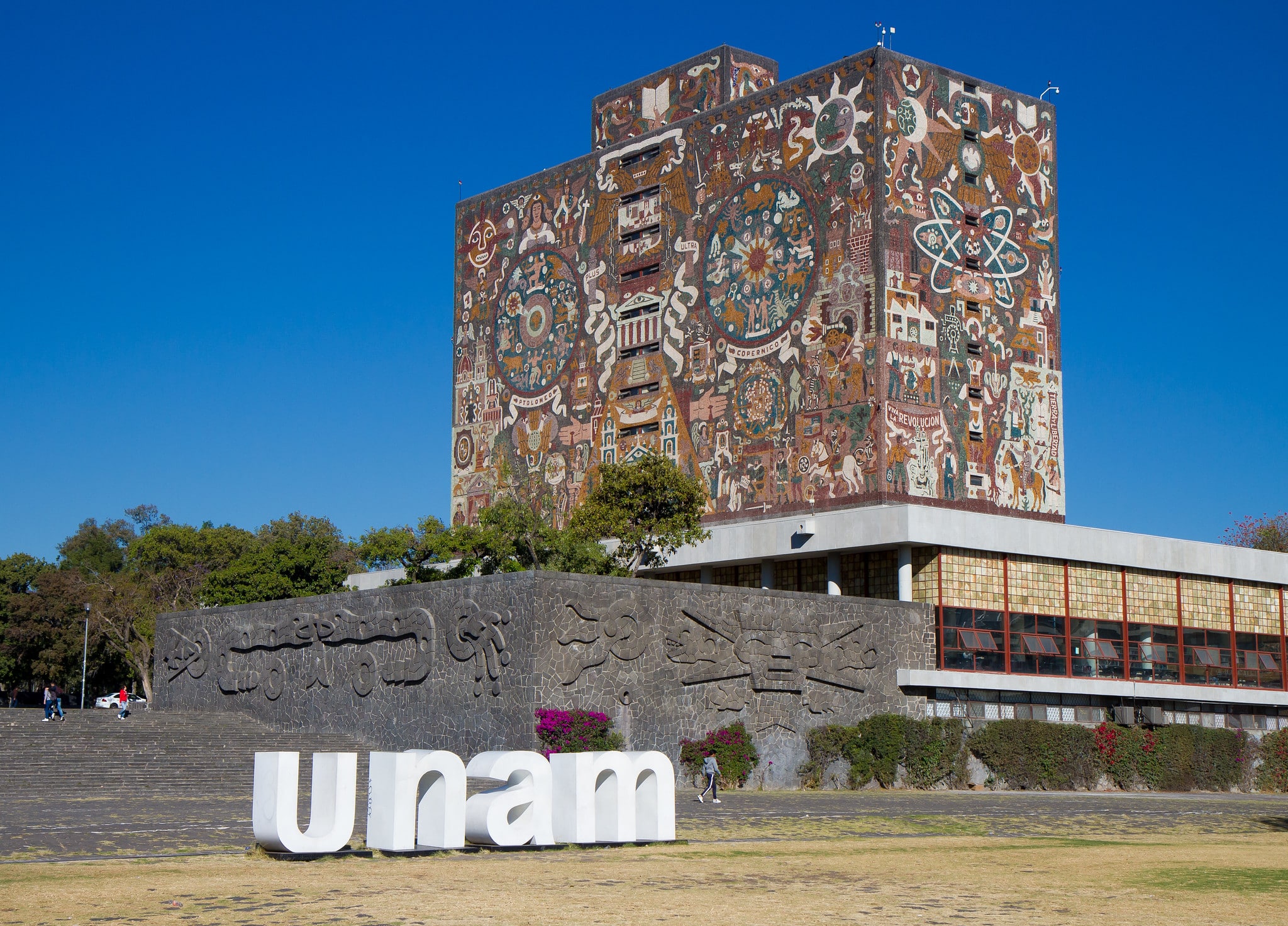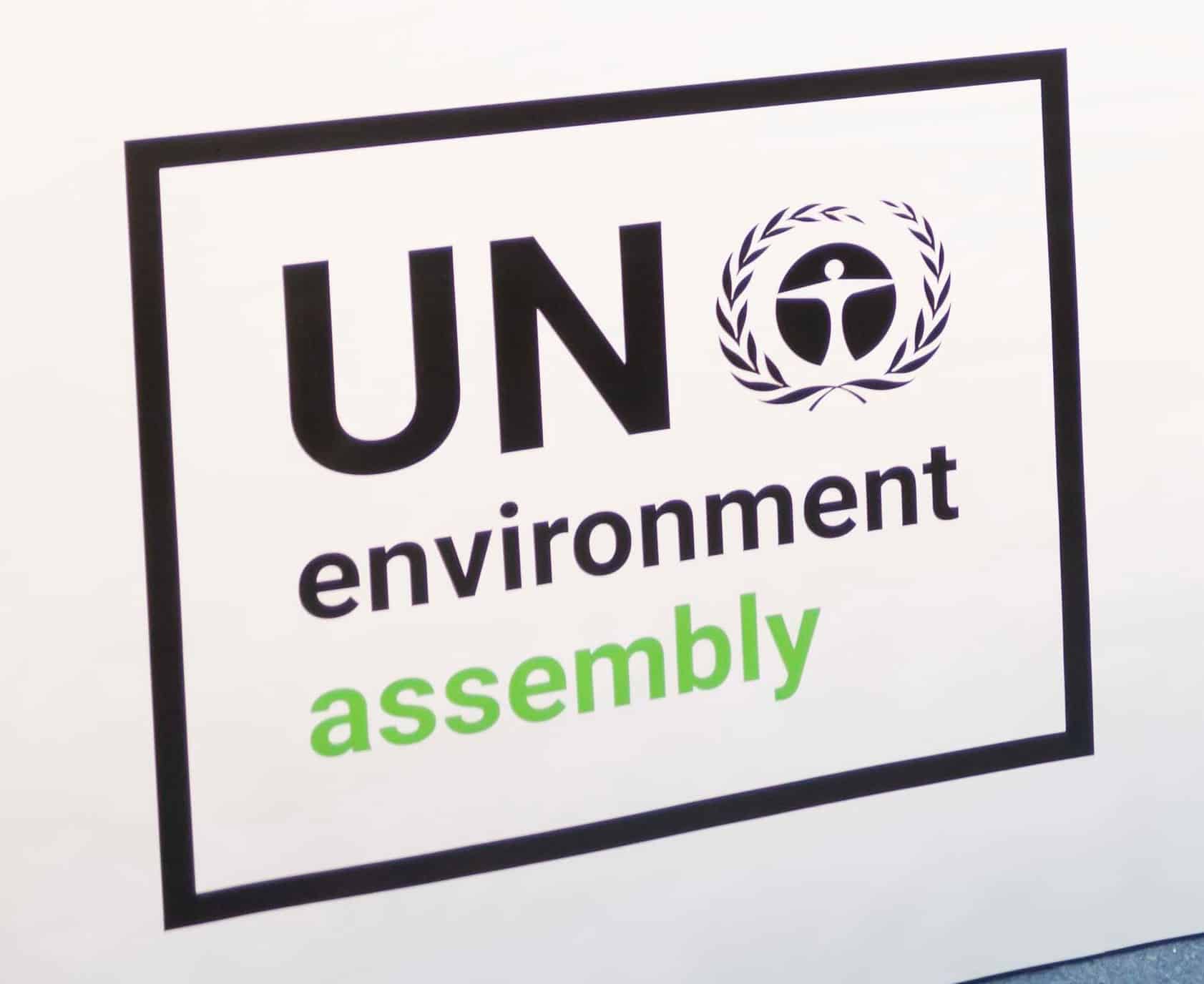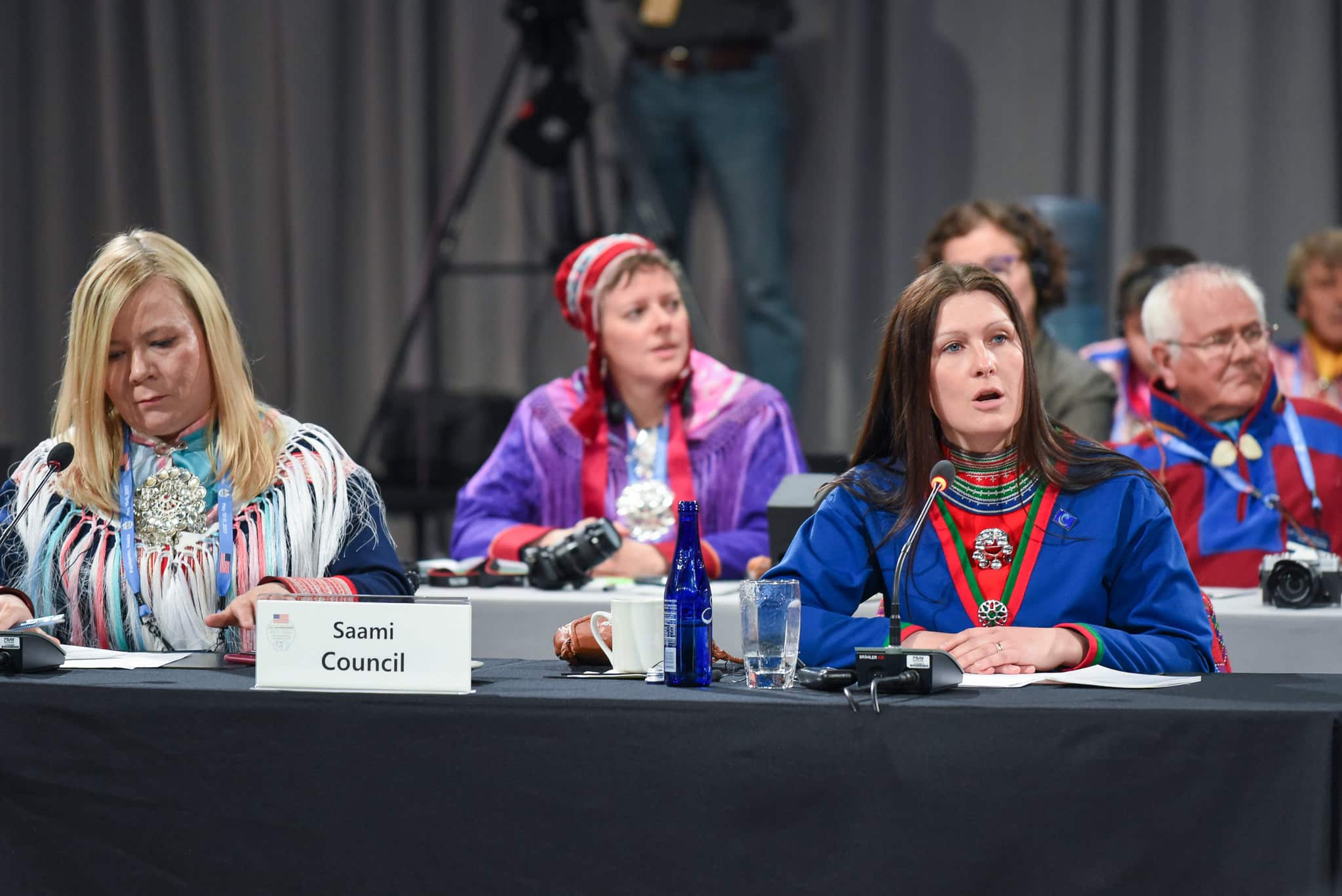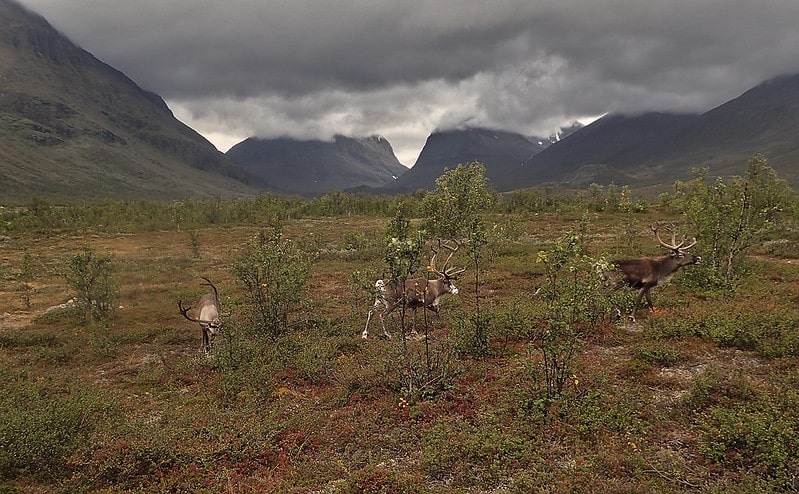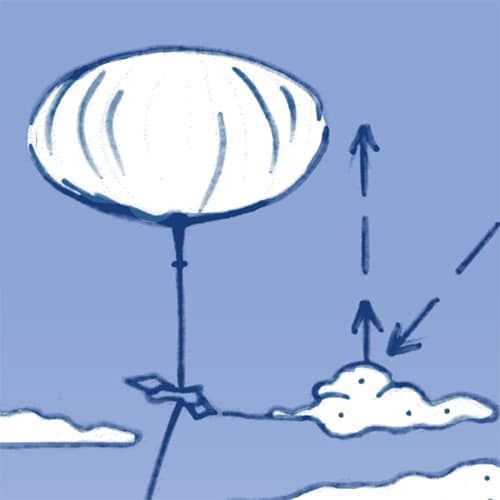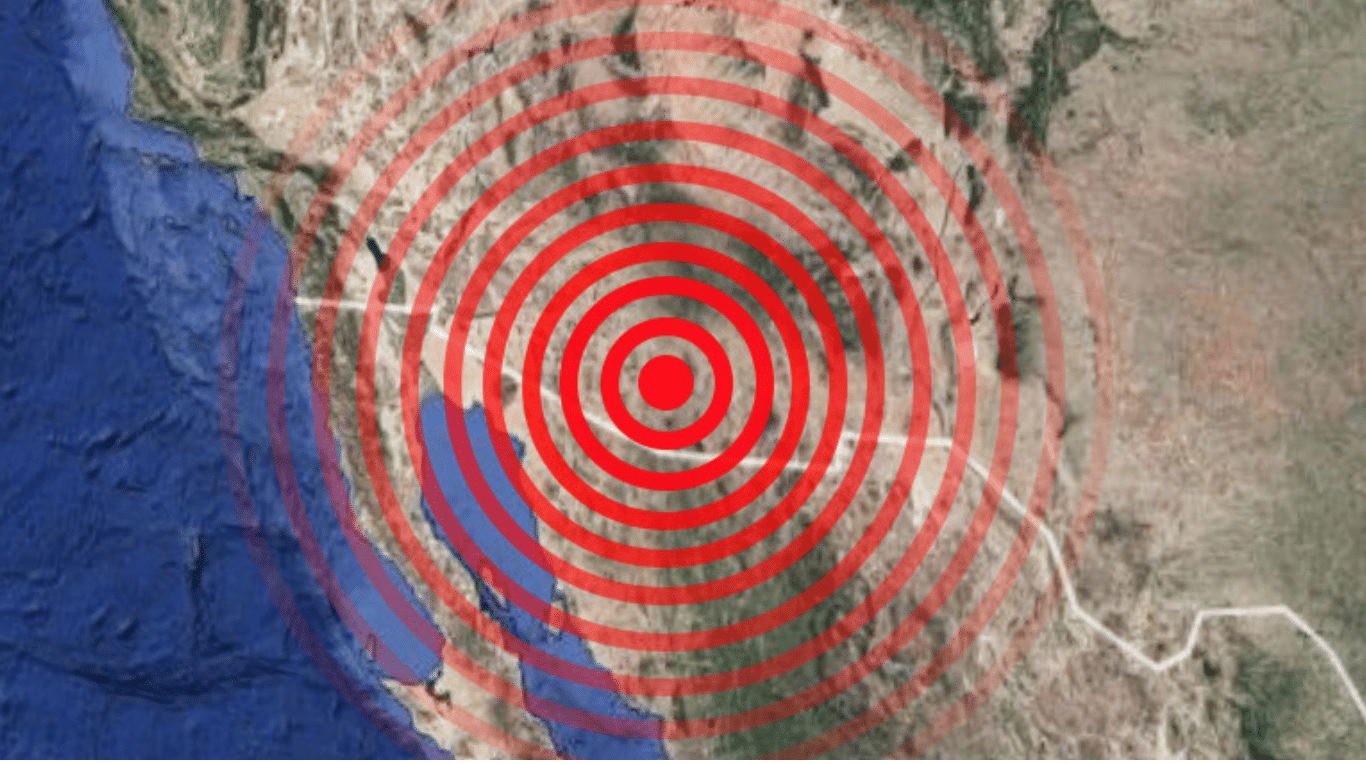Stratospheric Aerosol Injection
Type
Areas of deployment
Proposal
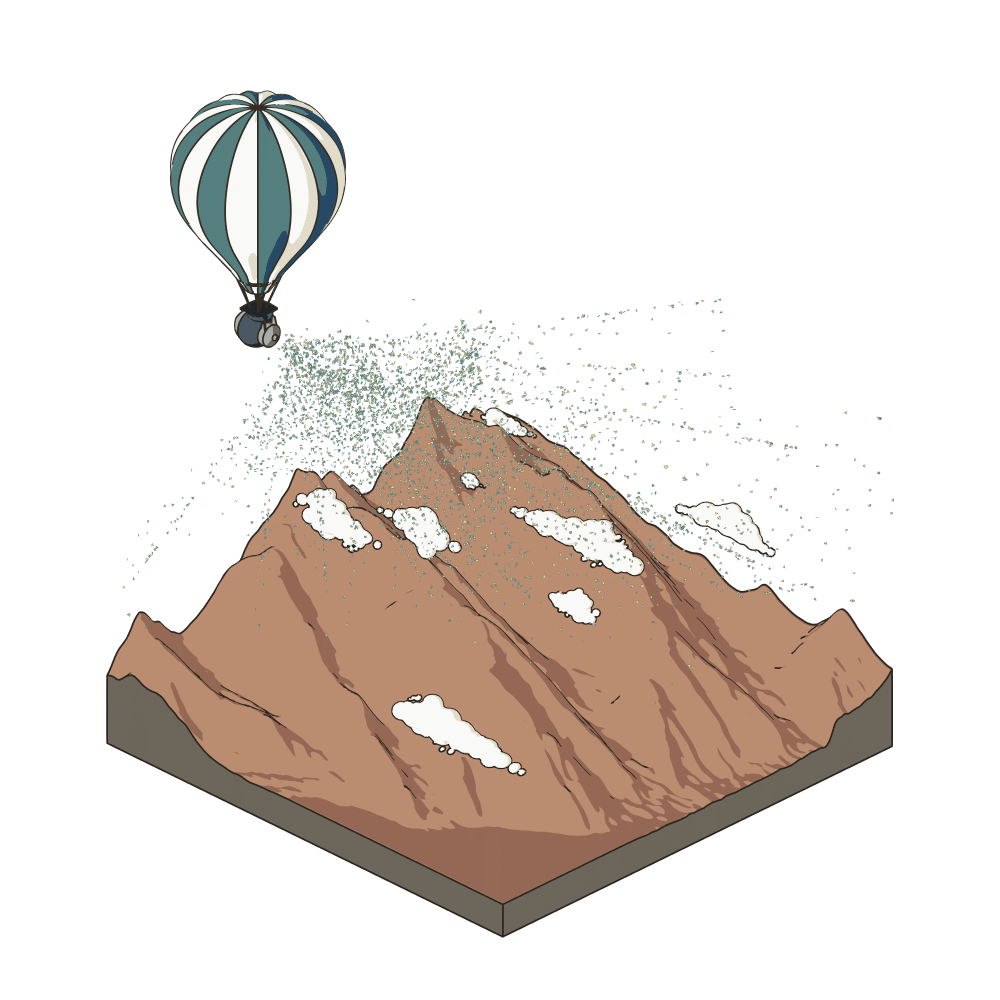
Featured project
Show on map
Latest technology update
Show update
Description and purpose of the technology
Stratospheric Aerosol Injection (SAI) is a theoretical solar geoengineering proposal to spray large quantities of tiny reflective particles into the stratosphere, an upper layer of the Earth’s atmosphere, in order to cool the planet by reflecting sunlight back into space. Proposals range from spraying reflective particles, such as sulfur dioxides, finely powdered salt or calcium carbonate, from aircraft, shooting particles from artillery guns, or using large hoses to reach high altitudes.
None of these solar geoengineering approaches address the underlying causes of climate change. Instead, they aim to control the amount of incoming solar radiation by emulating the sulfur-rich dust cloud that remains in the atmosphere after large volcanic eruptions. In contrast to a volcanic eruption, SAI would require particle concentrations to be maintained in the stratosphere, which would be achieved through continual and regular injections.
SAI using sulfur dioxide is the most-studied option, and modeling simulations suggest that this technique would likely cause droughts in Africa and Asia, and endanger food and water sources for two billion people. Because of the unequal global impacts and its potential to be weaponized, solar geoengineering carries insurmountable governance-related challenges. In response to this threat, hundreds of academics and civil society organizations from around the world have called for a multilateral ban on solar geoengineering. [1]
Actors involved
Research on SAI is largely based on modeling, which has mostly been conducted in the Northern hemisphere and at US institutions, in particular Harvard University. Its main financial backers are the US government and philanthropic foundations associated with tech billionaires and other wealthy individuals, such as Bill Gates. In 2019, the U.S. government allocated US$ 4 million to the National Oceanic and Atmospheric Association (NOAA) to conduct research on solar geoengineering, and SAI with sulfur dioxide is one of the approaches that NOAA committed to exploring.
The DEveloping country Governance REsearch and Evaluation for SRM (Degrees) Initiative aims to facilitate the participation of countries in the Global South in research relating to the deployment and governance of solar geoengineering, in order to give it more legitimacy and the impression that it isn’t dominated by northern interests. Its published research to date has focused almost exclusively on SAI deployment, and the organization’s decision-making structures and funding sources are dominated by academics and foundations in the Global North.
The only known SAI field experiments to have been conducted to date are:
- Tests carried out by a Russian institution in 2009 which injected sulfates into the troposphere. [2]
- Make Sunsets, which was founded in October 2022 which has conducted unauthorised test flights with helium weather balloons and sulphur particles from Baja California (near La Ventana, Mexico), Reno (Nevada, USA) and in California, including San Francisco Bay. In January 2023, a month after the Ventana experiments became public knowledge, the Mexican government banned them. Since then, Make Sunset has released more balloons in the US.
- In March 2023, it was revealed that researchers in the UK had conducted two open-air experiments to test SAI by launching a high-altitude weather balloon filled with helium and sulfur dioxide into the stratosphere. The researchers named the project SATAN (Stratospheric Aerosol Transport and Nucleation). The launch site was at European Astrotech Ltd in Aylesbury, Buckinghamshire, in south-east England.
SCoPEx: Stratospheric aerosol injection experiment
David Keith, based at Harvard University, is at the forefront of research into solar geoengineering. He is an investor in the technology, has lobbied governments and manages, along with Ken Caldeira, the Fund for Innovative Climate and Energy Research (FICER), a multimillion dollar geoengineering fund financed by Bill Gates since 2007. He has also commissioned a study by a US aerospace company that argued that the large-scale deployment of solar geoengineering technologies is feasible. In early 2017, he launched Harvard’s Solar Geoengineering Research Program, which aimed to raise US$ 20 million in funding from several billionaires and private foundations. [3] Alongside other engineers and researchers, Keith has proposed a number of field experiments, [4] including the open-air Stratospheric Controlled Perturbation Experiment (SCoPEx).
SCoPEx aimed to provide real-world data for modeling solar geoengineering and predicting the effects of large-scale SAI deployment. The experiment envisioned dispersing various different types of particles into the stratosphere from a balloon at an altitude of 20 kilometers, and monitoring the reflective properties of injected particles and their impact on the surrounding atmosphere. The balloon was to be steered from ground and equipped with scientific instruments, including sensors for data collection. [5]
More than just scientific research, this outdoor solar geoengineering experiment was also designed as a public relations exercise with the aim of normalizing outdoor experiments and paving the way for more extensive experiments that would ultimately lead to large-scale deployment. [6] However, following years of concerted pressure and campaigning by civil society groups and Indigenous Peoples’ organizations, SCoPEx was canceled in early 2024, before it was able to successfully carry out an outdoor experiment. David Kieth has also now moved on to lead the University of Chicago’s Climate Systems Engineering initiative, which is also planning to conduct SAI experiments.
Other actors
Given their unwillingness to make drastic emissions cuts, fossil fuel multinationals and numerous other big polluters are increasingly becoming structurally dependent on technofix solutions to the climate crisis in order to continue operating. Because of this, they are trying to shift policy norms so that previously unthinkable ideas, like solar geoengineering, become more mainstream and acceptable.
ExxonMobil is one such company, and its former Senior Scientific Advisor, Dr. Haroon Kheshgi, was the company’s point person on geoengineering, recruited from the Lawrence Livermore National Laboratory. [7] Through his efforts, ExxonMobil influenced “independent” reports on geoengineering and funded work that advocated for Carbon Dioxide Removal (CDR) and solar geoengineering as climate mitigation options. Khesgi was also an author of several IPCC reports, and this conflict of interest was denounced by civil society. ExxonMobil’s former CEO and former U.S. Secretary of State Rex Tillerson has described climate change as an “engineering problem” with “engineering solutions.” [8]
Other fossil fuel companies also have links to solar geoengineering, including Shell’s chief lobbyist, David Hone, who is evangelical about “negative emissions” and increasingly openly supports solar geoengineering. [9] Steve Koonin, a former chief scientist at BP, led a project to assess the technical feasibility of solar geoengineering experiments. [10]
Boeing’s former Integrated Defense Systems Chief Scientist and Vice-President, David Whelan (formerly of DARPA), has also been active in geoengineering debates, and claimed that there was a small team at Boeing studying the issue. He publicly mused about the technical feasibility of getting millions of tonnes of aerosol sulfates up to different stratospheric levels via aircraft or large cannons. [11]
Impacts of the technology
As with all solar geoengineering technologies that only address global surface temperatures, dramatic perturbations in the climate system can be expected if SAI is deployed. SAI would modify the Earth’s radiative balance, and is also associated with significant potential risks and uncertainties, such as impacts on extreme weather events, ecosystems, rainfall patterns, agricultural yields, ozone chemistry, solar energy output, human health and many more. [12]
Early research into SAI from the UK’s Met Office Hadley Centre found that SAI could lead to severe drought in the Sahel region of Africa. While researchers found that this could possibly be countered by injecting particles into the Southern Hemisphere’s stratosphere instead, this would likely cause a failure of the rains in northeast Brazil. [13]
A recent modeling study simulating the climate effects of SAI found similar potential negative consequences. Injection in the Northern Hemisphere would lead to fewer hurricanes in the North Atlantic, which might be good news for the Caribbean, but it would likely result in drought in Sub-Saharan Africa and parts of India. Injecting aerosols into the stratosphere above the Southern Hemisphere would conversely result in more hurricanes in the North Atlantic. [14]
Regional warming is also likely, based on results published by the Geoengineering Model Intercomparison Project (GeoMIP) in 2014. It predicted that temperatures in the tropics would cool as a result of SAI, but higher latitudes would warm, with ice sheets and Arctic sea ice still declining, and extreme temperature anomalies also still increasing.
The so-called termination effect is another major SAI-related risk, with studies indicating that if deployment were halted suddenly there would be rapid temperature and precipitation increases at five to 10 times the rates of gradual global warming. [15] A scientific study published in Nature in 2018 showed that the shock caused by the sudden termination of solar geoengineering would have grave impacts on biodiversity. This means that stopping SAI once it had started could be more dangerous than starting it in the first place. Ozone depletion is another important side effect of SAI. [16]
Studies on the impacts of SAI on public health are limited, but a recent analysis suggests that adverse public health impacts may be expected. Little is known about the toxicity of some aerosols that have been suggested, and there is no consensus on what acceptable levels of public exposure to these aerosols are. There are also very few means of evaluating potential public health impacts should SAI be deployed. [17]
Exacerbates global power imbalances
The prospect of controlling global temperatures raises serious governance questions—if effective solar geoengineering technologies are developed, who will get to control the Earth’s thermostat, and adjust the climate for their own interests? Who will make the decision to deploy if such drastic measures are considered technically feasible, and whose interests will be ignored?
The risk of weaponization of SAI is considerable. The premise of controlling the weather originated with military strategies, which led to the signing of the international Environmental Modification Convention (ENMOD). Military leaders in the United States and other countries have pondered the possibilities of weaponized weather manipulation for decades. If the explicit aim of a technology is to “combat climate change,” it doesn’t guarantee its use will be limited only to that application. Historian James Fleming argues that if anybody can control the Earth’s thermostat, this can and will be used for military purposes. Even before hostile use, any state or actor claiming to be able to alter global weather patterns will hold a powerful geopolitical bargaining chip with which to threaten and bully. [18]
Solar geoengineering is the perfect excuse for inaction on climate change
Solar geoengineering, and geoengineering more broadly, is a “perfect excuse” for climate change deniers, industries and governments seeking to avoid the political costs of emissions reductions and to continue business as usual. For those looking to stall meaningful climate action, the deployment of geoengineering technologies is the preferred pathway to addressing climate change. This line of argument has already been put forward by conservative think tanks in the United States such as the American Enterprise Institute.
Furthermore, once solar geoengineering is deployed, a sudden interruption would cause a termination effect, raising temperatures rapidly, and result in a situation worse than it was before its deployment. Therefore, solar geoengineering employment would create dependency and captive markets. [19]
Governance of solar geoengineering could be impossible
There is a de facto moratorium on climate-related geoengineering under the Convention on Biological Diversity (CBD) that clearly articulates the need for a transparent global regulatory and governance mechanism before geoengineering experiments are carried out. 196 countries have agreed to the need for a global mechanism because they recognize that the potential impacts and unintended consequences of geoengineering will be unfairly distributed globally.
Since solar geoengineering could be a tool for controlling the Earth’s thermostat for those who have the legal, economic and technological resources, any step towards realizing those capabilities must be agreed through consensus by all members of the UN. Another key problem is that if all governments could effectively agree on such a complex issue with so many social, economic, environmental and intergenerational aspects at play, climate change would have already been solved through binding rules to sufficiently reduce emissions. It seems highly unlikely therefore that consensus could ever be achieved and, even the Paris Agreement, which was heralded as a miraculous convergence of political will, only lasted a few months before the largest historical GHG-emitting country declared it wouldn’t respect it.
The failure to manage fair and effective international climate governance is a clear argument against moving ahead with geoengineering and particularly solar geoengineering, which is more deeply unfair and complex than other forms. The prospects of establishing the fully-democratic, multilateral, legally-binding and long-term agreements needed for minimally fair governance seem minimal. Without such a mechanism, once the tools are developed it will be extremely difficult, if not impossible, to stop powerful actors from using it at their convenience. Therefore, the most appropriate type of governance mechanism for solar geoengineering is a global ban.
Reality check
Although outdoor experiments have been successfully opposed in several cases, which has limited research to computer modeling and a number of small-scale field experiments, SAI is still seen as the most viable solar geoengineering option. Consequently, a number of actors are working hard to normalize SAI research and experiments, which could lead to the technology being developed quickly. The cancellation of the SCoPEx project is the most high-profile example of the effectiveness of civil society opposition to solar geoengineering.
Further reading
For more information on SAI and solar geoengineering governance see:
- The HOME! Alliance celebrates the defeat of a high-profile solar geoengineering experiment: https://www.geoengineeringmonitor.org/2024/03/home-scopex-pr/
- The Big Bad Fix: http://www.geoengineeringmonitor.org/2017/12/3087/
- Fuel to Fire: https://www.boell.de/en/2019/02/13/fuel-fire?dimension1=ds_geoengineering
- Why the SDGs Require a Governance Debate Based on Precaution, Rights and Fairness: https://sdg.iisd.org/commentary/guest-articles/geoengineering-at-unea-4-why-the-sdgs-require-a-governance-debate-based-on-precaution-rights-and-fairness/
End notes
[1] Jones et al. (2017) Impacts of hemispheric solar geoengineering on tropical cyclone frequency, in: Nat Commun, Vol. 8 (1382), https://doi.org/10.1038/s41467-017-01606-0; Fuhr (2019) Geoengineering at UNEA-4: Why the SDGs Require a Governance Debate Based on Precaution, Rights and Fairness, in IISD, SDG Knowledge Hub, published online: March 5, 2019, http://sdg.iisd.org/commentary/guest-articles/geoengineering-at-unea-4-why-the-sdgs-require-a-governance-debate-based-on-precaution-rights-and-fairness/; Robock, et al. (2010) A Test for Geoengineering?, in: Science, Vol. 327(5965): 530 – 531, http://doi.org/10.1126/science.1186237
[2] Stephens and Surprise (2019) The hidden injustices of advancing solar geoengineering research, in: Global Sustainability, Vol. 3: 1 – 6, https://doi.org/10.1017/sus.2019.28; ETC Group and Heinrich Böll Foundation (2020) Geoengineering Map, https://map.geoengineeringmonitor.org/; Kravitz and MacMartin (2020) Uncertainty and the basis for confidence in solar geoengineering research, in: Nat Rev Earth Environ, Vol. 1: 64 -75, https://doi.org/10.1038/s43017-019-0004-7
[3] ETC Group and Heinrich Böll Foundation (2020) Geoengineering Map: Fund for Innovative Climate and Energy Research (FICER), https://map.geoengineeringmonitor.org/other/fund-for-innovative-climate-and-energy-research-ficer/; ETC Group and Heinrich Böll Foundation (2020) Geoengineering Map: Harvard’s Solar Geoengineering Research Program, https://map.geoengineeringmonitor.org/other/harvard_s-solar-geoengineering-research-program/
[4] Keith, et al. (2014) Field experiments on solar geoengineering: report of a workshop exploring a representative research portfolio, in: Phil. Trans. R. Soc. A, Vol. 372(2031), https://doi.org/10.1098/rsta.2014.0175
[5] ETC Group and Heinrich Böll Foundation (2020) Geoengineering Map: Stratospheric Controlled Perturbation Experiment (SCoPEx), https://map.geoengineeringmonitor.org/Solar-Radiation-Management/stratospheric-controlled-perturbation-experiment-scopex/
[6] Pierrehumbert (2017) The trouble with geoengineers “hacking the planet”, in Bulletin of the Atomic Scientists, published June 23, 2017, https://thebulletin.org/2017/06/the-trouble-with-geoengineers-hacking-the-planet/
[7] Zundel (2017) Trump Administration – A Geoengineering Administration?, ETC Group Briefing, March 28, 2017, www.etcgroup.org/content/trump-administration-geoengineering-administration
[8] Associated Press (2012) Climate change fears overblown, says ExxonMobil boss, in: The Guardian, June 28, 2012, www.guardian.co.uk/environment/2012/jun/28/exxonmobil-climate-change-rex-tillerson; ETC Group (2017) Civil society: “Oil companies should not author IPCC report”, published: May 3, 2017, https://www.etcgroup.org/content/open-letter-ipcc-108-civil-society-organizations
[9] Hone (2017) The geo-engineering taboo” in: EnergyPost, June 26, 2017, http://energypost.eu/the-geo-engineering-taboo/
[10] Blackstock, et al. (2009) Climate Engineering Responses to Climate Emergencies, Novim, https://arxiv.org/ftp/arxiv/papers/0907/0907.5140.pdf
[11] Fora.tv (2010) Geoengineering: Global Salvation or Ruin? , Audio podcast produced by Commonwealth Club of California, https://www.commonwealthclub.org/events/archive/podcast/geo-engineering-global-salvation-or-ruin
[12] Kravitz and MacMartin (2020); Robock, et al. (2015) 20 reasons why geoengineering may be a bad idea, in: Bulletin of the Atomic Scientists, Vol. 64(2):14 – 59, https://doi.org/10.1080/00963402.2008.11461140
[13] Radford (2013) Geoengineering could case drought in Sahel, in: Climate Home News, April 2, 2013, http://www.climatechangenews.com/2013/04/02/geoengineering-could-cause-drought-in-sahel/
[14] Jones, et al. (2017)
[15] Robock (2014), Stratospheric Aerosol Geoengineering, in: Issues in Environmental Science and Technology, Vol. 38, http://climate.envsci.rutgers.edu/pdf/RobockStratAerosolGeo.pdf
[16] Heckendorn, et al. (2009) The impact of geoengineering aerosols on stratospheric temperature and ozone, in: Environ. Res. Lett., Vol. 4(4), https://doi.org/10.1088/1748-9326/4/4/045108; Trisos, et al. (2018) Potentially dangerous consequences for biodiversity of solar geoengineering implementation and termination, in Nature Ecology & Evolution, Vol 2, https://doi.org/10.1038/s41559-017-0431-0
[17] Effiong and Neitzel (2016) Assessing the direct occupational and public health impacts of solar radiation management with stratospheric aerosols, in: Environ. Health, Vol. 15 (7), https://doi.org/10.1186/s12940-016-0089-0
[18] Fleming (2010) Fixing the Sky: The Checkered History of Weather and Climate Control, Columbia University Press, New York, ISBN 9780231144131; Stephens and Surprise (2019); Heyen, et al. (2019) Strategic implications of counter-geoengineering: Clash or cooperation?, in Journal of Environmental Economics and Management, Vol 95, https://doi.org/10.1016/j.jeem.2019.03.005
[19] ETC Group (2010) Geopiracy: The Case Against Geoengineering, Communiqué 103, http://etcgroup.org/content/geopiracy-case-against-geoengineering; Robock (2014)
[20] ETC Group and Heinrich Böll Foundation (2020) Geoengineering Map: Field experiment in Russia, https://map.geoengineeringmonitor.org/Solar-Radiation-Management/field-experiment-in-russia/
Stratospheric Aerosol Injection
TIPO
Zonas de despliegue
Propuesta

Proyecto destacado
Mostrar en el mapa
Última actualización de la tecnología
Mostrar actualización
Descripción y propósito de la tecnología
Stratospheric Aerosol Injection (SAI) is a theoretical solar geoengineering proposal to spray large quantities of tiny reflective particles into the stratosphere, an upper layer of the Earth’s atmosphere, in order to cool the planet by reflecting sunlight back into space. Proposals range from spraying reflective particles, such as sulfur dioxides, finely powdered salt or calcium carbonate, from aircraft, shooting particles from artillery guns, or using large hoses to reach high altitudes.
None of these solar geoengineering approaches address the underlying causes of climate change. Instead, they aim to control the amount of incoming solar radiation by emulating the sulfur-rich dust cloud that remains in the atmosphere after large volcanic eruptions. In contrast to a volcanic eruption, SAI would require particle concentrations to be maintained in the stratosphere, which would be achieved through continual and regular injections.
SAI using sulfur dioxide is the most-studied option, and modeling simulations suggest that this technique would likely cause droughts in Africa and Asia, and endanger food and water sources for two billion people. Because of the unequal global impacts and its potential to be weaponized, solar geoengineering carries insurmountable governance-related challenges. In response to this threat, hundreds of academics and civil society organizations from around the world have called for a multilateral ban on solar geoengineering. [1]
Actores involucrados
Research on SAI is largely based on modeling, which has mostly been conducted in the Northern hemisphere and at US institutions, in particular Harvard University. Its main financial backers are the US government and philanthropic foundations associated with tech billionaires and other wealthy individuals, such as Bill Gates. In 2019, the U.S. government allocated US$ 4 million to the National Oceanic and Atmospheric Association (NOAA) to conduct research on solar geoengineering, and SAI with sulfur dioxide is one of the approaches that NOAA committed to exploring.
The DEveloping country Governance REsearch and Evaluation for SRM (Degrees) Initiative aims to facilitate the participation of countries in the Global South in research relating to the deployment and governance of solar geoengineering, in order to give it more legitimacy and the impression that it isn’t dominated by northern interests. Its published research to date has focused almost exclusively on SAI deployment, and the organization’s decision-making structures and funding sources are dominated by academics and foundations in the Global North.
The only known SAI field experiments to have been conducted to date are:
- Tests carried out by a Russian institution in 2009 which injected sulfates into the troposphere. [2]
- Make Sunsets, which was founded in October 2022 which has conducted unauthorised test flights with helium weather balloons and sulphur particles from Baja California (near La Ventana, Mexico), Reno (Nevada, USA) and in California, including San Francisco Bay. In January 2023, a month after the Ventana experiments became public knowledge, the Mexican government banned them. Since then, Make Sunset has released more balloons in the US.
- In March 2023, it was revealed that researchers in the UK had conducted two open-air experiments to test SAI by launching a high-altitude weather balloon filled with helium and sulfur dioxide into the stratosphere. The researchers named the project SATAN (Stratospheric Aerosol Transport and Nucleation). The launch site was at European Astrotech Ltd in Aylesbury, Buckinghamshire, in south-east England.
SCoPEx: Stratospheric aerosol injection experiment
David Keith, based at Harvard University, is at the forefront of research into solar geoengineering. He is an investor in the technology, has lobbied governments and manages, along with Ken Caldeira, the Fund for Innovative Climate and Energy Research (FICER), a multimillion dollar geoengineering fund financed by Bill Gates since 2007. He has also commissioned a study by a US aerospace company that argued that the large-scale deployment of solar geoengineering technologies is feasible. In early 2017, he launched Harvard’s Solar Geoengineering Research Program, which aimed to raise US$ 20 million in funding from several billionaires and private foundations. [3] Alongside other engineers and researchers, Keith has proposed a number of field experiments, [4] including the open-air Stratospheric Controlled Perturbation Experiment (SCoPEx).
SCoPEx aimed to provide real-world data for modeling solar geoengineering and predicting the effects of large-scale SAI deployment. The experiment envisioned dispersing various different types of particles into the stratosphere from a balloon at an altitude of 20 kilometers, and monitoring the reflective properties of injected particles and their impact on the surrounding atmosphere. The balloon was to be steered from ground and equipped with scientific instruments, including sensors for data collection. [5]
More than just scientific research, this outdoor solar geoengineering experiment was also designed as a public relations exercise with the aim of normalizing outdoor experiments and paving the way for more extensive experiments that would ultimately lead to large-scale deployment. [6] However, following years of concerted pressure and campaigning by civil society groups and Indigenous Peoples’ organizations, SCoPEx was canceled in early 2024, before it was able to successfully carry out an outdoor experiment. David Kieth has also now moved on to lead the University of Chicago’s Climate Systems Engineering initiative, which is also planning to conduct SAI experiments.
Other actors
Given their unwillingness to make drastic emissions cuts, fossil fuel multinationals and numerous other big polluters are increasingly becoming structurally dependent on technofix solutions to the climate crisis in order to continue operating. Because of this, they are trying to shift policy norms so that previously unthinkable ideas, like solar geoengineering, become more mainstream and acceptable.
ExxonMobil is one such company, and its former Senior Scientific Advisor, Dr. Haroon Kheshgi, was the company’s point person on geoengineering, recruited from the Lawrence Livermore National Laboratory. [7] Through his efforts, ExxonMobil influenced “independent” reports on geoengineering and funded work that advocated for Carbon Dioxide Removal (CDR) and solar geoengineering as climate mitigation options. Khesgi was also an author of several IPCC reports, and this conflict of interest was denounced by civil society. ExxonMobil’s former CEO and former U.S. Secretary of State Rex Tillerson has described climate change as an “engineering problem” with “engineering solutions.” [8]
Other fossil fuel companies also have links to solar geoengineering, including Shell’s chief lobbyist, David Hone, who is evangelical about “negative emissions” and increasingly openly supports solar geoengineering. [9] Steve Koonin, a former chief scientist at BP, led a project to assess the technical feasibility of solar geoengineering experiments. [10]
Boeing’s former Integrated Defense Systems Chief Scientist and Vice-President, David Whelan (formerly of DARPA), has also been active in geoengineering debates, and claimed that there was a small team at Boeing studying the issue. He publicly mused about the technical feasibility of getting millions of tonnes of aerosol sulfates up to different stratospheric levels via aircraft or large cannons. [11]
Impactos de la tecnología
As with all solar geoengineering technologies that only address global surface temperatures, dramatic perturbations in the climate system can be expected if SAI is deployed. SAI would modify the Earth’s radiative balance, and is also associated with significant potential risks and uncertainties, such as impacts on extreme weather events, ecosystems, rainfall patterns, agricultural yields, ozone chemistry, solar energy output, human health and many more. [12]
Early research into SAI from the UK’s Met Office Hadley Centre found that SAI could lead to severe drought in the Sahel region of Africa. While researchers found that this could possibly be countered by injecting particles into the Southern Hemisphere’s stratosphere instead, this would likely cause a failure of the rains in northeast Brazil. [13]
A recent modeling study simulating the climate effects of SAI found similar potential negative consequences. Injection in the Northern Hemisphere would lead to fewer hurricanes in the North Atlantic, which might be good news for the Caribbean, but it would likely result in drought in Sub-Saharan Africa and parts of India. Injecting aerosols into the stratosphere above the Southern Hemisphere would conversely result in more hurricanes in the North Atlantic. [14]
Regional warming is also likely, based on results published by the Geoengineering Model Intercomparison Project (GeoMIP) in 2014. It predicted that temperatures in the tropics would cool as a result of SAI, but higher latitudes would warm, with ice sheets and Arctic sea ice still declining, and extreme temperature anomalies also still increasing.
The so-called termination effect is another major SAI-related risk, with studies indicating that if deployment were halted suddenly there would be rapid temperature and precipitation increases at five to 10 times the rates of gradual global warming. [15] A scientific study published in Nature in 2018 showed that the shock caused by the sudden termination of solar geoengineering would have grave impacts on biodiversity. This means that stopping SAI once it had started could be more dangerous than starting it in the first place. Ozone depletion is another important side effect of SAI. [16]
Studies on the impacts of SAI on public health are limited, but a recent analysis suggests that adverse public health impacts may be expected. Little is known about the toxicity of some aerosols that have been suggested, and there is no consensus on what acceptable levels of public exposure to these aerosols are. There are also very few means of evaluating potential public health impacts should SAI be deployed. [17]
Exacerbates global power imbalances
The prospect of controlling global temperatures raises serious governance questions—if effective solar geoengineering technologies are developed, who will get to control the Earth’s thermostat, and adjust the climate for their own interests? Who will make the decision to deploy if such drastic measures are considered technically feasible, and whose interests will be ignored?
The risk of weaponization of SAI is considerable. The premise of controlling the weather originated with military strategies, which led to the signing of the international Environmental Modification Convention (ENMOD). Military leaders in the United States and other countries have pondered the possibilities of weaponized weather manipulation for decades. If the explicit aim of a technology is to “combat climate change,” it doesn’t guarantee its use will be limited only to that application. Historian James Fleming argues that if anybody can control the Earth’s thermostat, this can and will be used for military purposes. Even before hostile use, any state or actor claiming to be able to alter global weather patterns will hold a powerful geopolitical bargaining chip with which to threaten and bully. [18]
Solar geoengineering is the perfect excuse for inaction on climate change
Solar geoengineering, and geoengineering more broadly, is a “perfect excuse” for climate change deniers, industries and governments seeking to avoid the political costs of emissions reductions and to continue business as usual. For those looking to stall meaningful climate action, the deployment of geoengineering technologies is the preferred pathway to addressing climate change. This line of argument has already been put forward by conservative think tanks in the United States such as the American Enterprise Institute.
Furthermore, once solar geoengineering is deployed, a sudden interruption would cause a termination effect, raising temperatures rapidly, and result in a situation worse than it was before its deployment. Therefore, solar geoengineering employment would create dependency and captive markets. [19]
Governance of solar geoengineering could be impossible
There is a de facto moratorium on climate-related geoengineering under the Convention on Biological Diversity (CBD) that clearly articulates the need for a transparent global regulatory and governance mechanism before geoengineering experiments are carried out. 196 countries have agreed to the need for a global mechanism because they recognize that the potential impacts and unintended consequences of geoengineering will be unfairly distributed globally.
Since solar geoengineering could be a tool for controlling the Earth’s thermostat for those who have the legal, economic and technological resources, any step towards realizing those capabilities must be agreed through consensus by all members of the UN. Another key problem is that if all governments could effectively agree on such a complex issue with so many social, economic, environmental and intergenerational aspects at play, climate change would have already been solved through binding rules to sufficiently reduce emissions. It seems highly unlikely therefore that consensus could ever be achieved and, even the Paris Agreement, which was heralded as a miraculous convergence of political will, only lasted a few months before the largest historical GHG-emitting country declared it wouldn’t respect it.
The failure to manage fair and effective international climate governance is a clear argument against moving ahead with geoengineering and particularly solar geoengineering, which is more deeply unfair and complex than other forms. The prospects of establishing the fully-democratic, multilateral, legally-binding and long-term agreements needed for minimally fair governance seem minimal. Without such a mechanism, once the tools are developed it will be extremely difficult, if not impossible, to stop powerful actors from using it at their convenience. Therefore, the most appropriate type of governance mechanism for solar geoengineering is a global ban.
Visión realista
Although outdoor experiments have been successfully opposed in several cases, which has limited research to computer modeling and a number of small-scale field experiments, SAI is still seen as the most viable solar geoengineering option. Consequently, a number of actors are working hard to normalize SAI research and experiments, which could lead to the technology being developed quickly. The cancellation of the SCoPEx project is the most high-profile example of the effectiveness of civil society opposition to solar geoengineering.
Lectura complementaria
For more information on SAI and solar geoengineering governance see:
- The HOME! Alliance celebrates the defeat of a high-profile solar geoengineering experiment: https://www.geoengineeringmonitor.org/2024/03/home-scopex-pr/
- The Big Bad Fix: http://www.geoengineeringmonitor.org/2017/12/3087/
- Fuel to Fire: https://www.boell.de/en/2019/02/13/fuel-fire?dimension1=ds_geoengineering
- Why the SDGs Require a Governance Debate Based on Precaution, Rights and Fairness: https://sdg.iisd.org/commentary/guest-articles/geoengineering-at-unea-4-why-the-sdgs-require-a-governance-debate-based-on-precaution-rights-and-fairness/
Notas finales
[1] Jones et al. (2017) Impacts of hemispheric solar geoengineering on tropical cyclone frequency, in: Nat Commun, Vol. 8 (1382), https://doi.org/10.1038/s41467-017-01606-0; Fuhr (2019) Geoengineering at UNEA-4: Why the SDGs Require a Governance Debate Based on Precaution, Rights and Fairness, in IISD, SDG Knowledge Hub, published online: March 5, 2019, http://sdg.iisd.org/commentary/guest-articles/geoengineering-at-unea-4-why-the-sdgs-require-a-governance-debate-based-on-precaution-rights-and-fairness/; Robock, et al. (2010) A Test for Geoengineering?, in: Science, Vol. 327(5965): 530 – 531, http://doi.org/10.1126/science.1186237
[2] Stephens and Surprise (2019) The hidden injustices of advancing solar geoengineering research, in: Global Sustainability, Vol. 3: 1 – 6, https://doi.org/10.1017/sus.2019.28; ETC Group and Heinrich Böll Foundation (2020) Geoengineering Map, https://map.geoengineeringmonitor.org/; Kravitz and MacMartin (2020) Uncertainty and the basis for confidence in solar geoengineering research, in: Nat Rev Earth Environ, Vol. 1: 64 -75, https://doi.org/10.1038/s43017-019-0004-7
[3] ETC Group and Heinrich Böll Foundation (2020) Geoengineering Map: Fund for Innovative Climate and Energy Research (FICER), https://map.geoengineeringmonitor.org/other/fund-for-innovative-climate-and-energy-research-ficer/; ETC Group and Heinrich Böll Foundation (2020) Geoengineering Map: Harvard’s Solar Geoengineering Research Program, https://map.geoengineeringmonitor.org/other/harvard_s-solar-geoengineering-research-program/
[4] Keith, et al. (2014) Field experiments on solar geoengineering: report of a workshop exploring a representative research portfolio, in: Phil. Trans. R. Soc. A, Vol. 372(2031), https://doi.org/10.1098/rsta.2014.0175
[5] ETC Group and Heinrich Böll Foundation (2020) Geoengineering Map: Stratospheric Controlled Perturbation Experiment (SCoPEx), https://map.geoengineeringmonitor.org/Solar-Radiation-Management/stratospheric-controlled-perturbation-experiment-scopex/
[6] Pierrehumbert (2017) The trouble with geoengineers “hacking the planet”, in Bulletin of the Atomic Scientists, published June 23, 2017, https://thebulletin.org/2017/06/the-trouble-with-geoengineers-hacking-the-planet/
[7] Zundel (2017) Trump Administration – A Geoengineering Administration?, ETC Group Briefing, March 28, 2017, www.etcgroup.org/content/trump-administration-geoengineering-administration
[8] Associated Press (2012) Climate change fears overblown, says ExxonMobil boss, in: The Guardian, June 28, 2012, www.guardian.co.uk/environment/2012/jun/28/exxonmobil-climate-change-rex-tillerson; ETC Group (2017) Civil society: “Oil companies should not author IPCC report”, published: May 3, 2017, https://www.etcgroup.org/content/open-letter-ipcc-108-civil-society-organizations
[9] Hone (2017) The geo-engineering taboo” in: EnergyPost, June 26, 2017, http://energypost.eu/the-geo-engineering-taboo/
[10] Blackstock, et al. (2009) Climate Engineering Responses to Climate Emergencies, Novim, https://arxiv.org/ftp/arxiv/papers/0907/0907.5140.pdf
[11] Fora.tv (2010) Geoengineering: Global Salvation or Ruin? , Audio podcast produced by Commonwealth Club of California, https://www.commonwealthclub.org/events/archive/podcast/geo-engineering-global-salvation-or-ruin
[12] Kravitz and MacMartin (2020); Robock, et al. (2015) 20 reasons why geoengineering may be a bad idea, in: Bulletin of the Atomic Scientists, Vol. 64(2):14 – 59, https://doi.org/10.1080/00963402.2008.11461140
[13] Radford (2013) Geoengineering could case drought in Sahel, in: Climate Home News, April 2, 2013, http://www.climatechangenews.com/2013/04/02/geoengineering-could-cause-drought-in-sahel/
[14] Jones, et al. (2017)
[15] Robock (2014), Stratospheric Aerosol Geoengineering, in: Issues in Environmental Science and Technology, Vol. 38, http://climate.envsci.rutgers.edu/pdf/RobockStratAerosolGeo.pdf
[16] Heckendorn, et al. (2009) The impact of geoengineering aerosols on stratospheric temperature and ozone, in: Environ. Res. Lett., Vol. 4(4), https://doi.org/10.1088/1748-9326/4/4/045108; Trisos, et al. (2018) Potentially dangerous consequences for biodiversity of solar geoengineering implementation and termination, in Nature Ecology & Evolution, Vol 2, https://doi.org/10.1038/s41559-017-0431-0
[17] Effiong and Neitzel (2016) Assessing the direct occupational and public health impacts of solar radiation management with stratospheric aerosols, in: Environ. Health, Vol. 15 (7), https://doi.org/10.1186/s12940-016-0089-0
[18] Fleming (2010) Fixing the Sky: The Checkered History of Weather and Climate Control, Columbia University Press, New York, ISBN 9780231144131; Stephens and Surprise (2019); Heyen, et al. (2019) Strategic implications of counter-geoengineering: Clash or cooperation?, in Journal of Environmental Economics and Management, Vol 95, https://doi.org/10.1016/j.jeem.2019.03.005
[19] ETC Group (2010) Geopiracy: The Case Against Geoengineering, Communiqué 103, http://etcgroup.org/content/geopiracy-case-against-geoengineering; Robock (2014)
[20] ETC Group and Heinrich Böll Foundation (2020) Geoengineering Map: Field experiment in Russia, https://map.geoengineeringmonitor.org/Solar-Radiation-Management/field-experiment-in-russia/
